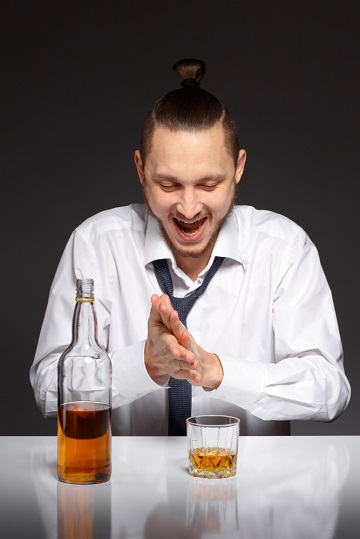Meanwhile, the mental health specialist, Victoria Angeles Carlos, from the Honorio Delgado – Hideyo Noguchi National Institute of Mental Health, pointed out that both the will of the patient in his rehabilitation, as well as the participation of the family in all stages of treatment giving their support, is equally important.
He also urged families to be aware that the patient’s rehabilitation requires a professional mental health service, so the person concerned must go to the health facility closest to their home, where the appropriate professional staff will evaluate them.
Intervention Services
It should be noted that the Minsa offers different rehabilitation services for people who suffer from addictions in the national hospital “Victor Larco Herrera”, located at Av. El Ejercito No. 600 Magdalena del Mar; Hermilio Valdizán, in Santa Anita (Central Highway Km. 3.5); as well as at the Honorio Delgado – Hideyo Noguchi National Institute of Mental Health, located at Jr. Eloy Espinoza Saldaña No. 709, in the Palao Urbanization, San Martín de Porres.
 Are People Addicted To Drugs Rehabilitated?
Are People Addicted To Drugs Rehabilitated?
The doubt about rehabilitating people who suffer from drug addiction or dependence is a frequent topic. Many people want to know if addicts are cured or if it is time, money and effort wasted for such a complex situation with subjects who often relapse.
This question, in turn, generates other questions: what models exist to treat an addiction? Is there an ideal or completely effective model? How long does a treatment take? What should be done with people who consume and do not want help?
To approach the answers, how we ask ourselves these questions and the theoretical concepts we use to undertake this task are not irrelevant. Behind them is the context from which addiction is understood and, therefore, the proposed treatment, as well as its scope. It is not the same to consider the scenario an incurable disease, a multifactorial disorder with the possibility of a cure, or vice versa.
If it is affirmed that drug addiction is a disease, this supposes a medical vision of suffering. That seems to be the perspective of those who follow the 12-step model of Alcoholics Anonymous. For them, alcoholism is a chronic, relapsing, progressive and, if not treated, fatal disease: “A disease of this kind – and we have come to the conviction that it is a disease – affects those around us as no other human disease does” (1986, p. 16) Diabetes, hypertension, lupus, are chronic diseases, if they are not treated they are disabling and, in many cases, fatal. Therefore, from this position, alcoholism is incurable. This would explain why AA members, when they introduce themselves to their group meeting, say: “Hi, I’m So-and-so, and I’m an alcoholic.”
However, the 12-step model maintains that, deep down, the ultimate root of addiction is of “spiritual” origin and that this is the way to achieve its cure. Indeed, Step 12, referring to the previous 11 Steps, says quite clearly: “Having had a spiritual awakening as a result of these steps, we try to carry this message to other alcoholics and to practice these principles in all our affairs” (p. 55). The transition from the medical to the spiritual is not fully explained; however, this is not to say that AA groups have not helped many people stop their outright self-destruction.
The Therapeutic Community model, for its part, maintains that addiction “is a disorder of the person as a whole” (De Leon, 2004, p. 65), which puts life in crisis, generating the inability to maintain abstinence, social and interpersonal dysfunction, and an antisocial lifestyle. From this vision, multiple dysfunctions define the disorder; thus, the problem is not the drug but the various aspects of the person involved since it is a disorder without a single cause –rather, multifactorial–. However, psychological and social factors are considered the primary sources and the individual’s contribution (responsibility). So, instead of seeing the addict as a patient, he is identified as a responsible subject, both for his addiction and for his treatment, and he will have to work on the different levels that his disorder compromises: cognitive, emotional, work, legal, educational, relational, etc.
The Minnesota model, also founded in the United States, sought to go beyond managing withdrawal symptoms and Detoxification by hospitals with alcoholics. This model takes up the 12 steps of Alcoholics Anonymous and adds various contributions that health professionals have researched on this condition. It considers addiction a primary, chronic and incurable disease, but treatable through total abstinence. He proposes starting with an intensive approach (hospitalization for a short period) and then continuing with treatment on an outpatient basis through a continuous care program, which includes a support network. Both phases address the physical, mental and social consequences of this primary disease with the help of a multidisciplinary team.
The 12 Steps, Minnesota and the Therapeutic Community, are the most used models (in that order) within our country to care for people dependent on psychoactive substances. It should be noted that the 12-step model of Alcoholics Anonymous originally consisted of attending the hour-and-a-half sessions every day without implying a period of internment. But, due to the difficulties in stopping alcohol consumption, an “Annex” was created in Mexico, a space next to the room where AA groups meet. From there comes the famous name “Annex. 24 hours” to associations with an internship and use the 12-step model.
Psychoanalysis – from Freud to contemporary analysts who have written and cared for people with this condition – understands the origin of addiction from unconscious intrapsychic factors without denying other present elements that also need to be addressed. Karl Abraham, a disciple and colleague of Freud and other relevant psychoanalysts of his time, tried to explain addiction and treat addicted patients. Later, this interest waned. Recently, few analysts have attempted to theorize and clinically care for people with this disorder. The possibility of linking psychoanalysis with other disciplines for treating addictions is a pending issue and is only debated in restricted circles.
 In the last 40 years, various drug addiction research centres have been created. The National Institute on Drug Abuse (NIDA) is one of them; It has worldwide prestige due to its multidisciplinary vision and scientific rigour. This institute has proposed a series of principles, thirteen to be exact, which should include all treatments, regardless of the approach model. In other words, any care program must include these principles in its treatment, resulting from recent research and analysis of both failed and successful experiences in working with these patients. Next, I mention three of these premises:
In the last 40 years, various drug addiction research centres have been created. The National Institute on Drug Abuse (NIDA) is one of them; It has worldwide prestige due to its multidisciplinary vision and scientific rigour. This institute has proposed a series of principles, thirteen to be exact, which should include all treatments, regardless of the approach model. In other words, any care program must include these principles in its treatment, resulting from recent research and analysis of both failed and successful experiences in working with these patients. Next, I mention three of these premises:
- “There is no single treatment that is appropriate for all people. It is of the utmost importance to achieve an adequate combination of the type of environment, interventions and treatment services with the problems and particular needs of each patient so that said person achieves the final success in returning to function productively in the family, work and society “(NIDA, 2010, p. 2).
- “Many people with drug addiction problems also have other mental disorders. Because drug abuse and addiction are both mental disorders, they often co-occur with other mental illnesses. Patients presenting one of these disorders should be evaluated to identify if they have some other type of mental disorder. When these problems occur simultaneously, treatment should be directed at both (or more) problems, and should include the use of medications if necessary” (p. 5).
- “Medical Detoxification is only the first stage of addiction treatment and does little to change long-term drug abuse. Although acute physical withdrawal symptoms can be safely managed through medical Detoxification and, in some cases, pave the way for effective long-term drug addiction treatment, Detoxification alone is rarely enough to help addicts achieve lasting abstinence. For this reason, patients should be encouraged to continue drug treatment after Detoxification.
How To Help A Drug Addict Who Doesn’t Want Help
If a person does not recognize that they have an addiction, we cannot help them. It is a difficult situation, but it is quite common. The specialists are used to it. Below we will tell you how to help a drug addict who does not want help. If you can follow these tips, you can give him the chance to recover that he needs so much and hasn’t realized it yet.…






 However, a person who has just given up a major source of pleasure may not be ready to make other drastic lifestyle changes. Therefore, it is more important that the person avoid a relapse into substance use than stick to a strict diet.
However, a person who has just given up a major source of pleasure may not be ready to make other drastic lifestyle changes. Therefore, it is more important that the person avoid a relapse into substance use than stick to a strict diet. Admitting a drug addict who voluntarily undergoes treatment in a health facility is an effective alternative to achieve rehabilitation, said Edgar Miraval Rojas, general director of the Víctor Larco Herrera National Hospital, who warned that drug addiction is an irreversible disease.
Admitting a drug addict who voluntarily undergoes treatment in a health facility is an effective alternative to achieve rehabilitation, said Edgar Miraval Rojas, general director of the Víctor Larco Herrera National Hospital, who warned that drug addiction is an irreversible disease. Are People Addicted To Drugs Rehabilitated?
Are People Addicted To Drugs Rehabilitated? In the last 40 years, various drug addiction research centres have been created. The National Institute on Drug Abuse (NIDA) is one of them; It has worldwide prestige due to its multidisciplinary vision and scientific rigour. This institute has proposed a series of principles, thirteen to be exact, which should include all treatments, regardless of the approach model. In other words, any care program must include these principles in its treatment, resulting from recent research and analysis of both failed and successful experiences in working with these patients. Next, I mention three of these premises:
In the last 40 years, various drug addiction research centres have been created. The National Institute on Drug Abuse (NIDA) is one of them; It has worldwide prestige due to its multidisciplinary vision and scientific rigour. This institute has proposed a series of principles, thirteen to be exact, which should include all treatments, regardless of the approach model. In other words, any care program must include these principles in its treatment, resulting from recent research and analysis of both failed and successful experiences in working with these patients. Next, I mention three of these premises: There are many cases of families who want to help an addict, and in their firm will to do so, they do not consider that it is a mental disorder due to consumption; therefore, specialized help is needed.
There are many cases of families who want to help an addict, and in their firm will to do so, they do not consider that it is a mental disorder due to consumption; therefore, specialized help is needed.